![]() The history of our King Tiger remains unclear in major aspects The vin 280215 suggests that the tank was issued to the heavy tank battalion 506 but later traces are lost until the year 1957.
The history of our King Tiger remains unclear in major aspects The vin 280215 suggests that the tank was issued to the heavy tank battalion 506 but later traces are lost until the year 1957.
The vehicle exhibits certain technical modification compared to the common tanks in service. Furthermore there are neither combat traces such as impact marks of larger or smaller rounds nor related repairs. Only the blown barrel end indicates a damage related to war actions as such intentionally conducted damages were commonly carried out, demanded by official order, to prevent a vehicle from being captured by the enemy if a non-operable vehicle had to be abandoned. However, also allied troupes blew up enemy tanks to make sure that those cannot be used again by the enemy in case of the need of a retreat. This was commonplace during the battle of the bulge in the Ardennes in 1944.
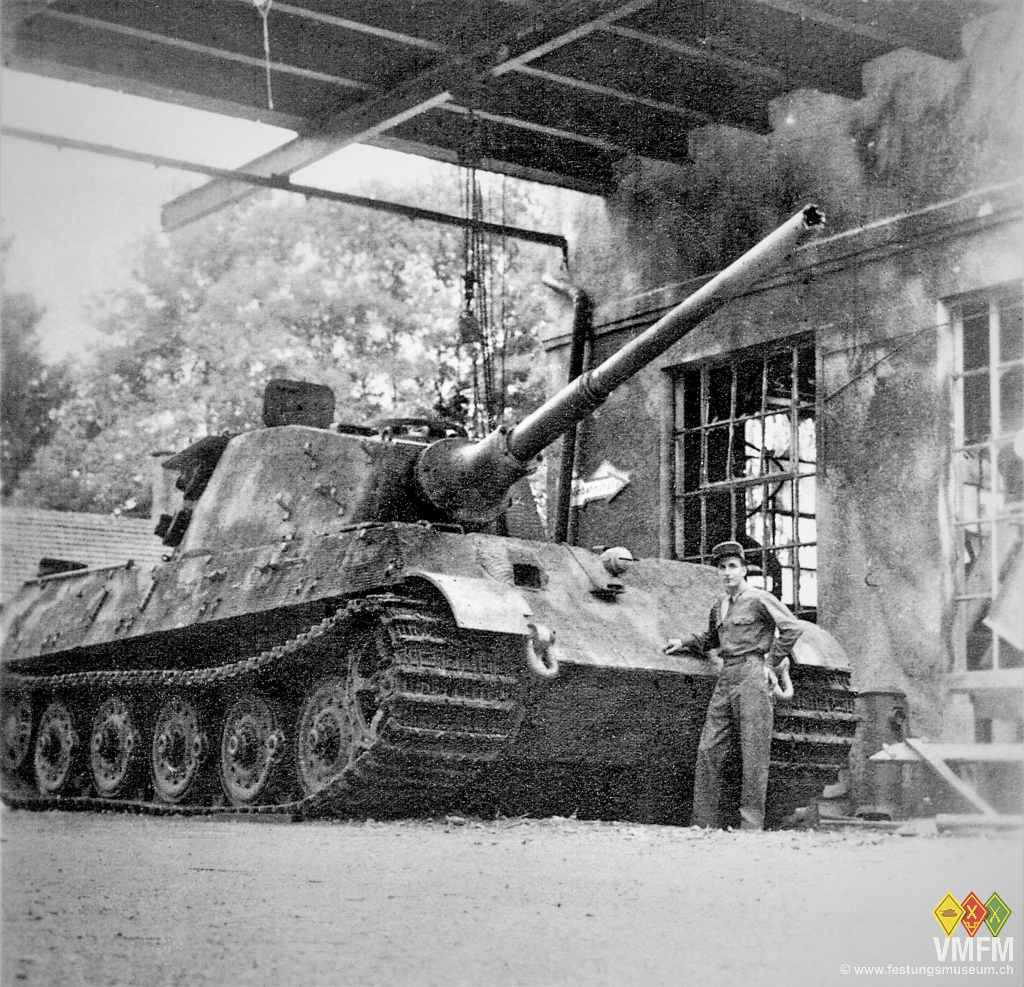
Page 81 of the 24th edition of ‹Panzerwrecks› by Lee Archer shows a photo of a King Tiger which almost certain is our King Tiger. The picture reportedly was taken by a french soldier in Bregenz / Austria, it, however, lacks any hints to photographer, date, exact location and circumstances of its generation.
The rupture pattern of the barrel is identical to the one on our tank. In addition the tank features a Zimmerit layer which was common for all german armored vehicles until the course of September 1944. Zimmerit is a concrete-like layer to prevent magnetic mines from sticking.
Our tank no longer had Zimmerit when it still sat in Thun. Only under the turret rear Zimmerit remainders could be found. The missing track skirts and outer sections of the front track covers as well as the fitted cross-country tracks are identical to our tank. The significant camouflage pattern provides a striking feature for comparison to other tanks.
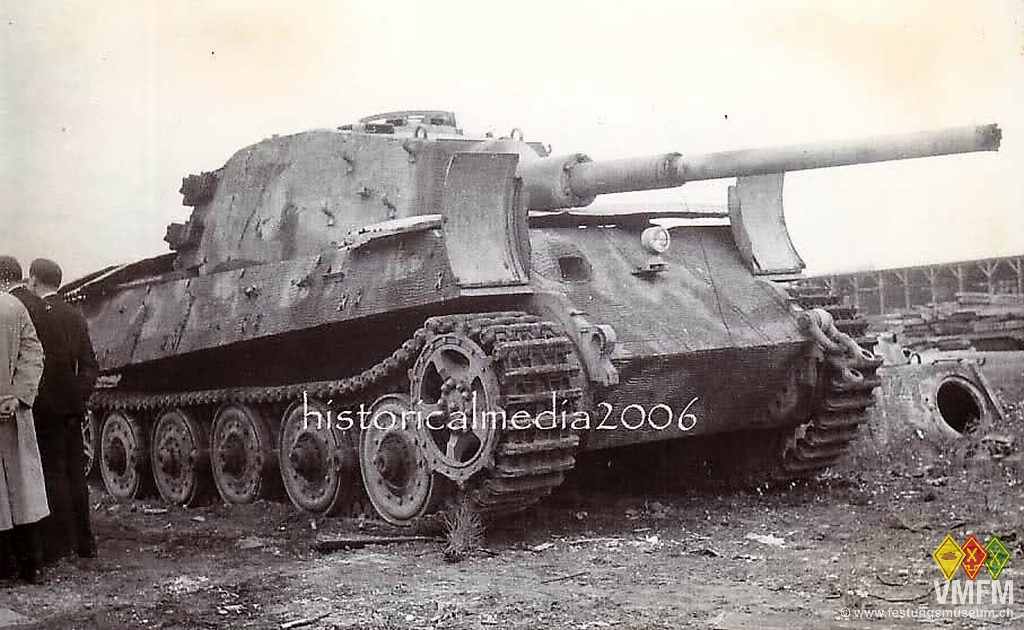
The King Tiger on the above shown photo, in the internet found under ‹historicalmedia 2006›, bears a great resemblance to our tank. Since the picture is blurred in the section of the blown barrel, an identification of this important feature is rather difficult. Compared to the Bregenz King Tiger with the cross-country tracks, the shown tank is equipped with transportation tracks. Time, location and circumstances of the photo are again unknown.
A comparison of both photos reveals an identical camouflage pattern on the hull as far as clarity of the pictures permit. This is particularly significant as in its days the camouflage paintings were applied individually at the troups. Todays patterns are applied with aid of stencils and so are identical by nature of the process.
The tank on both photos therefore is most likely our King Tiger.
Nonetheless, a couple of questions remain: What pic was taken first? When were the tracks changed? In case the first photo was indeed taken at Bregenz it must be noted that no combat actions with german tanks are reported in this area. The tank may have been sitting in the area within the course of the transportation to Switzerland, but there is no hint or even evidence for this theory.
The location Bregenz may be of interest from another point of view as, not far from there up north of lake Konstanz the company Maybach had a testing site on the ‹Panzerwiese› am Gehrenberg.
Thanks to private information from Mr. Egon Wegmann we know that at this site from end of 1944 thru February 1945 a King Tiger hull without turret was used for test drives, as evidenced by photos from his private archive. One photo shows the test driver Alois Fehrenbach in February 1945 on his way to Wangen / Allgäu with a King Tiger chassis.
The technical modifications on our Tiger suggest the utilization as a testing vehicle. Unfortunately, there are only very few pics and no written notes left from this testing, and we don’t know what was tested at all and what vehicle was used.
It would be conceivable that after the testing phase the turret may have been mounted again for combat actions, and the barrel would have been blown before french soldiers had captured the tank and brought to Bregenz. The fact that the pictured testing tank doesn’t feature Zimmerit speaks against this theory. Also the test hull lacks the spare antenna tube on the rear right side of the hull, which the Bregenz tank has. It appears less probable that a work-intensive Zimmerit layer and a camouflage paint would have been applied at a time when an early end of the war seemed likely. But at least it provides a theory for its origin.
Subsequently four pics from the testing of the King Tiger hull on the ‹Panzerwiese› at Markdorf, also from the private archive of Egon Wegmann.
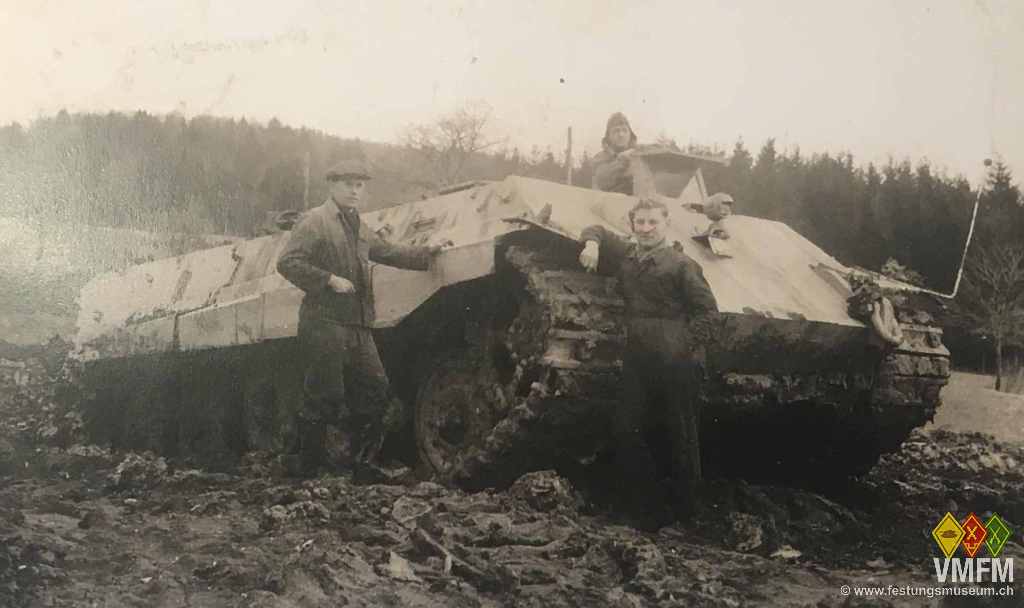
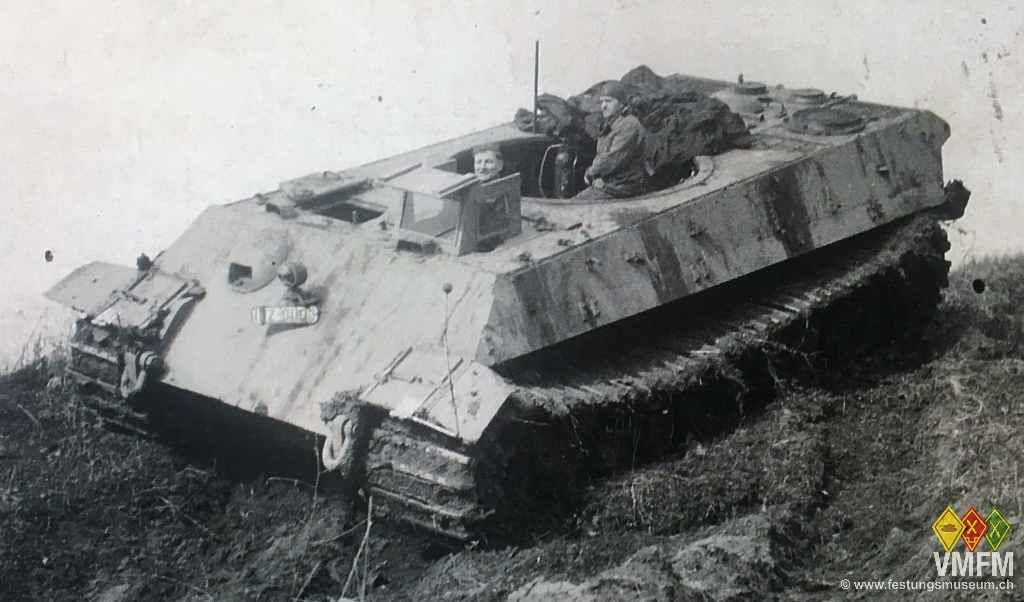
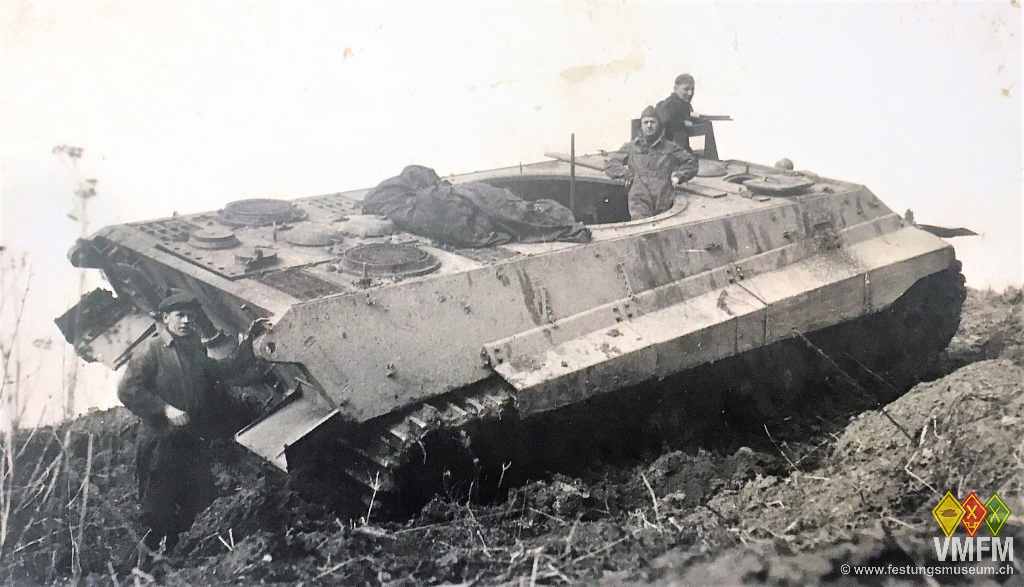
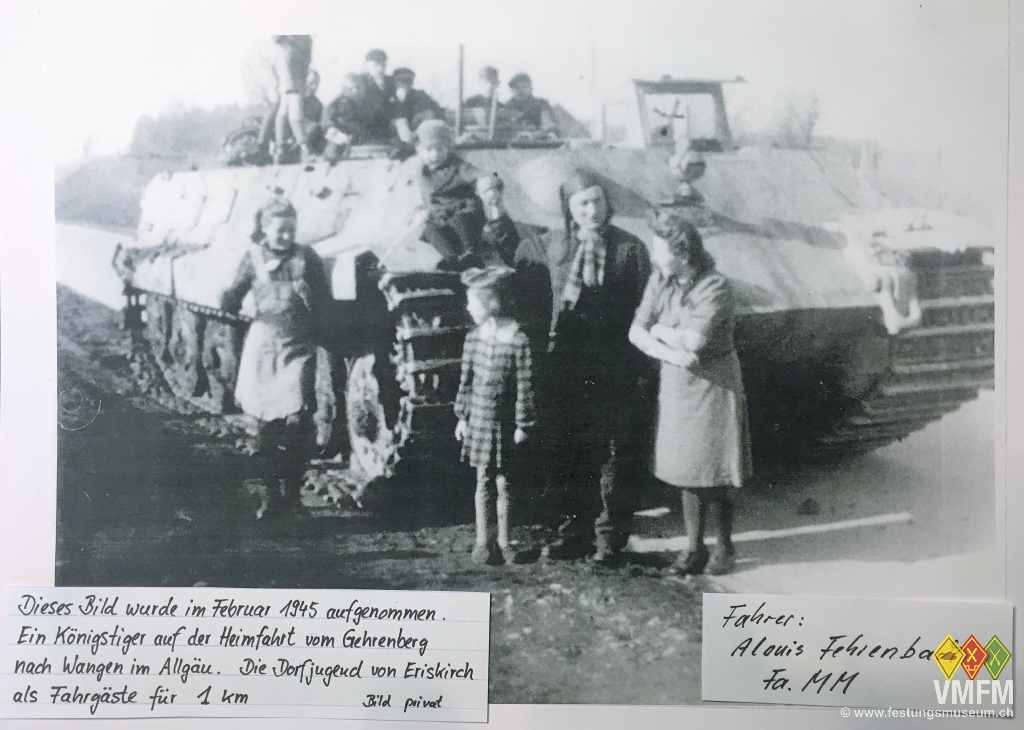
Further unknown is when and how our King Tiger came to Switzerland. While the delivery as gift of several german tanks (Panther, Jagdpanther, Panzer IV, Sturmgeschütz III, Hetzer, etc.) from France to Switzerland in 1945 is well documented, there are no such notes for our King Tiger.
An initial proof of the existence of the King Tiger in Switzerland is a note of the Kriegstechnische Abteilung / warfare technical department found in the federal archive of September 1957, saying that the department for light troups received ‹1 tank King Tiger, incomplete›. Furthermore there are twelve photos taken from the King Tiger used as a towing object with two Centurion recovery tanks 56 in 1958 on the occasion of a retraining course of tank battalion 12. The Tiger featured Zimmerit.
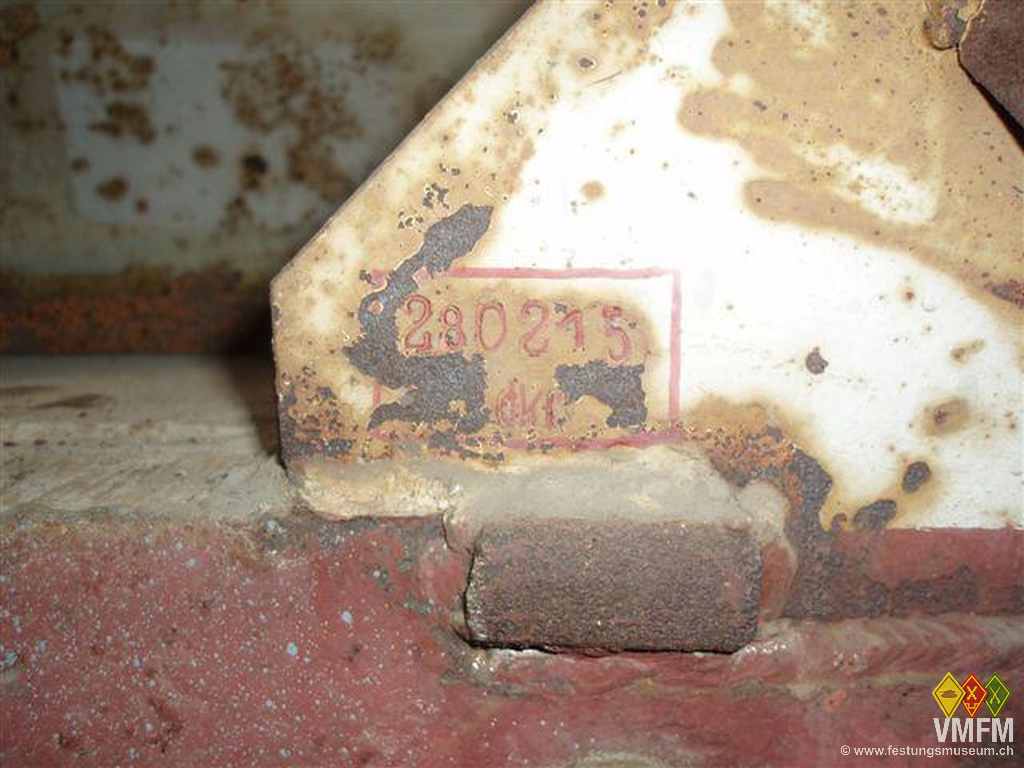
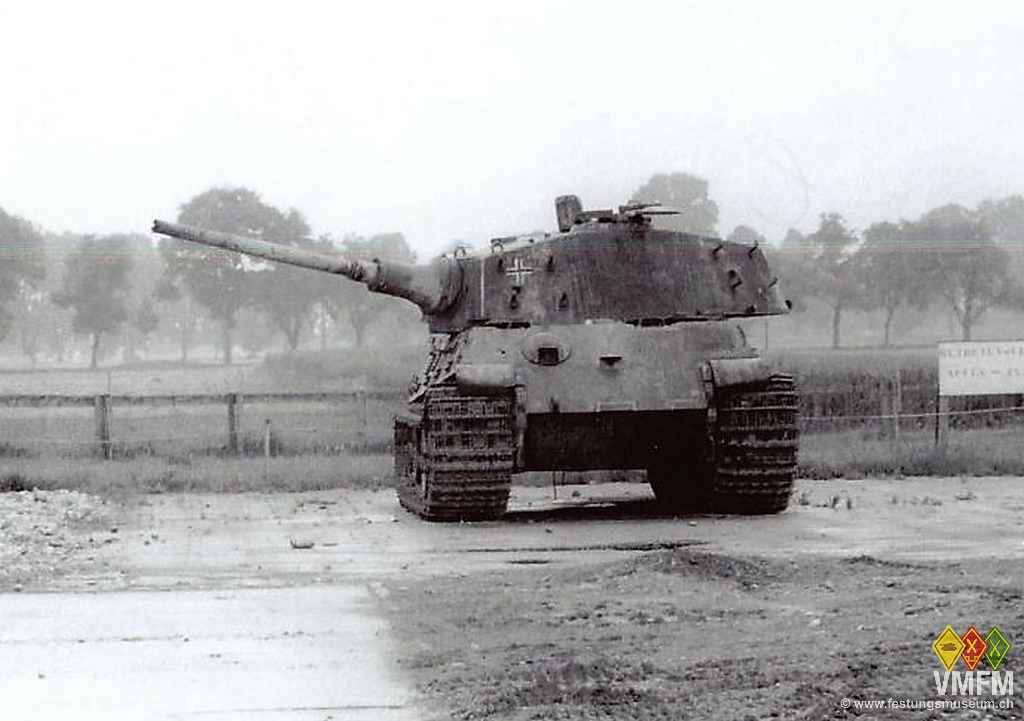
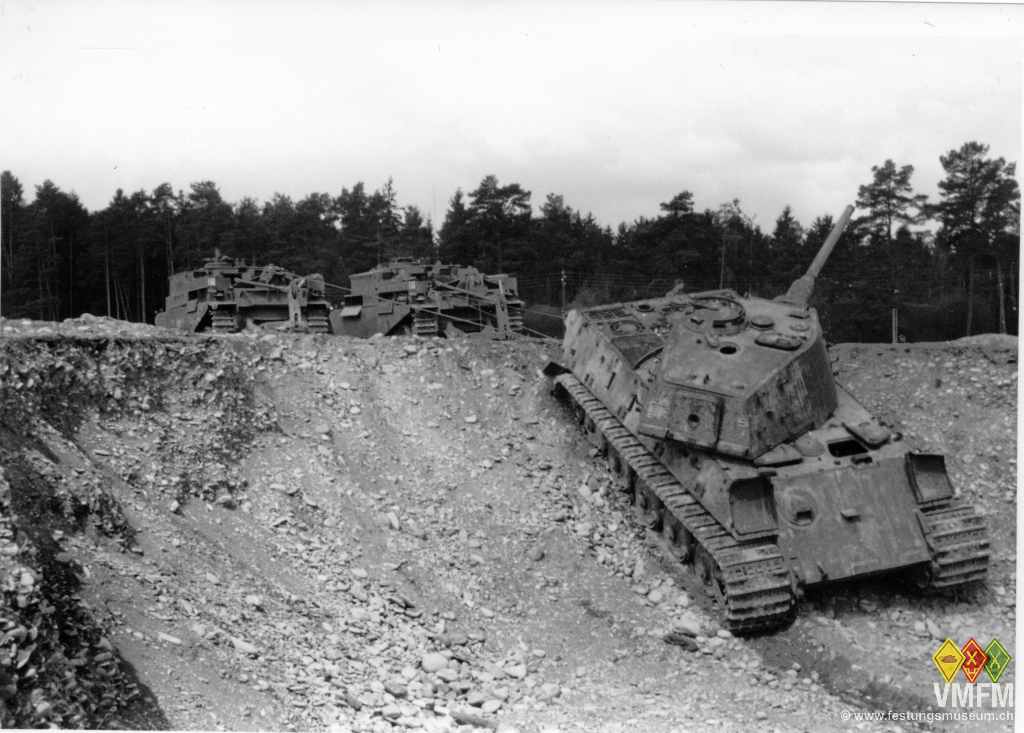
Literature sources offer various photographs of King Tigers with blown barrels from different theaters of war but no pic has yet been found which doubtlessly identifies our Tiger. Recently received photos from the Netherlands, Belgium and France were either not verifiable or clearly showed different tanks, as identifiable by technical features.
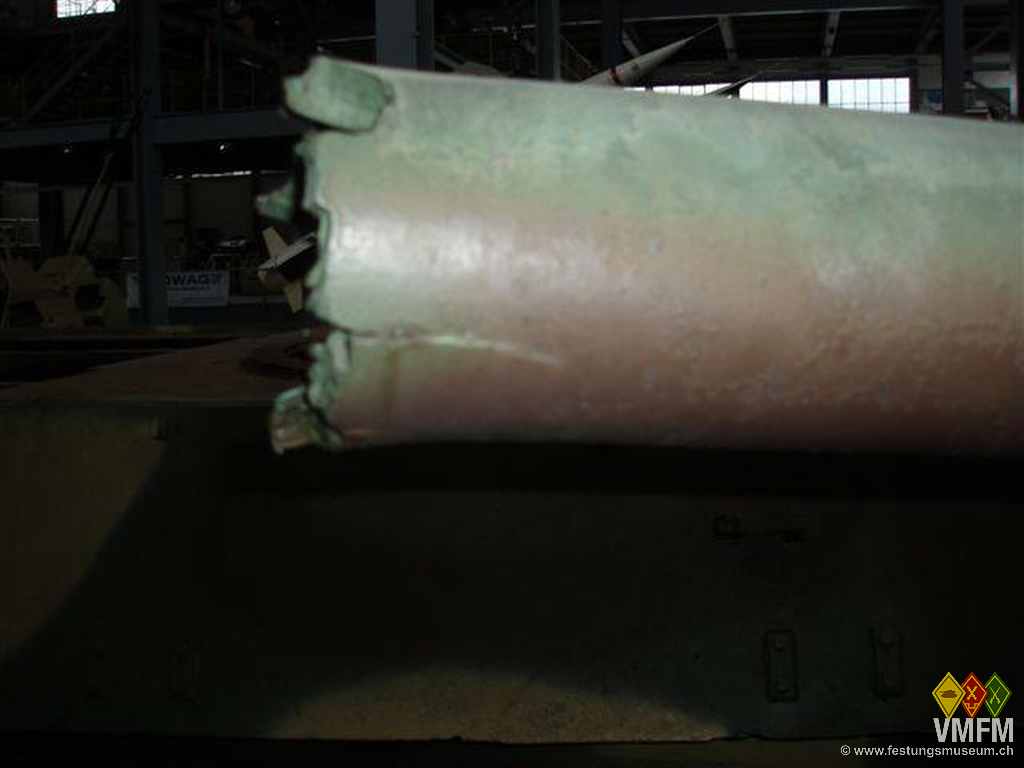
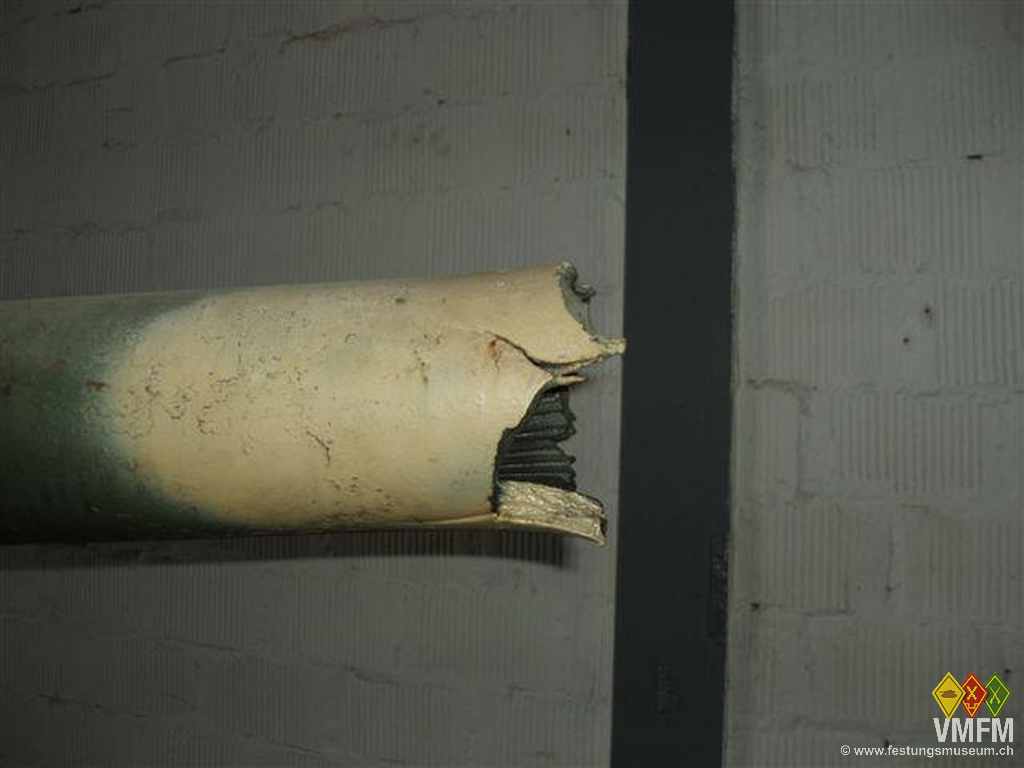
The recent history of the King Tiger in Thun is quickly told. After it arrived in Switzerland at an unknown time from unknown origin, it served as study object for the construction workshop in Thun until September 1957. At that time the recuperators of the gun and its deflector unit may have been removed. Afterwards it served as a towing object for the troup for tank recovery exercizes and was placed in the ‹tank museum› in front of the barracks of the old army vehicle park. At that time it had no Zimmerit and no camouflage, only remainders of the red-brown rust primer were visible.
In 1975 a first outer restoration with application of a sand-green pattern was carried out. After transition into the newly created open air tank museum on the ‹polygon› between the tank halls of the army site Thun the Tiger received a three color camouflage paint.
At 2006 the Swiss Military Museum Full received the King Tiger as a permanent loan, contingent on the promise to restore the tank at the expense of the museum. Since 2007 the restoration is proceeding with the target of maneuverability.
The considerable high costs of the project, however, permit progress in small steps.